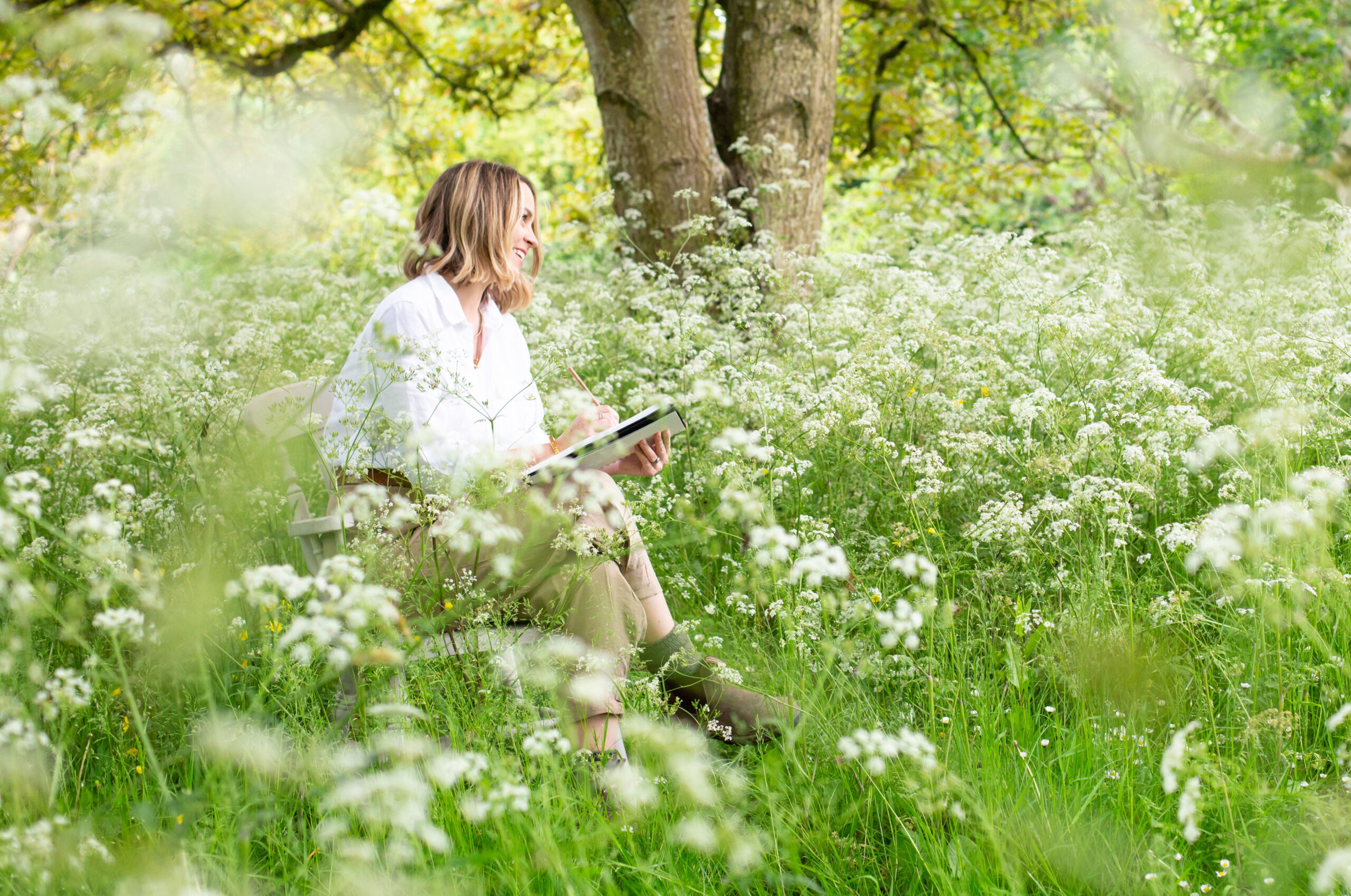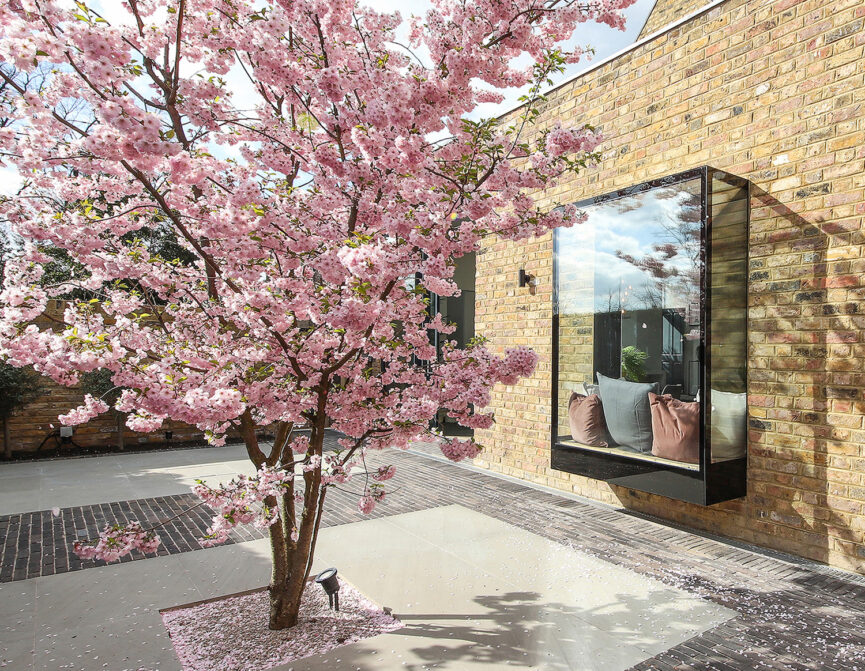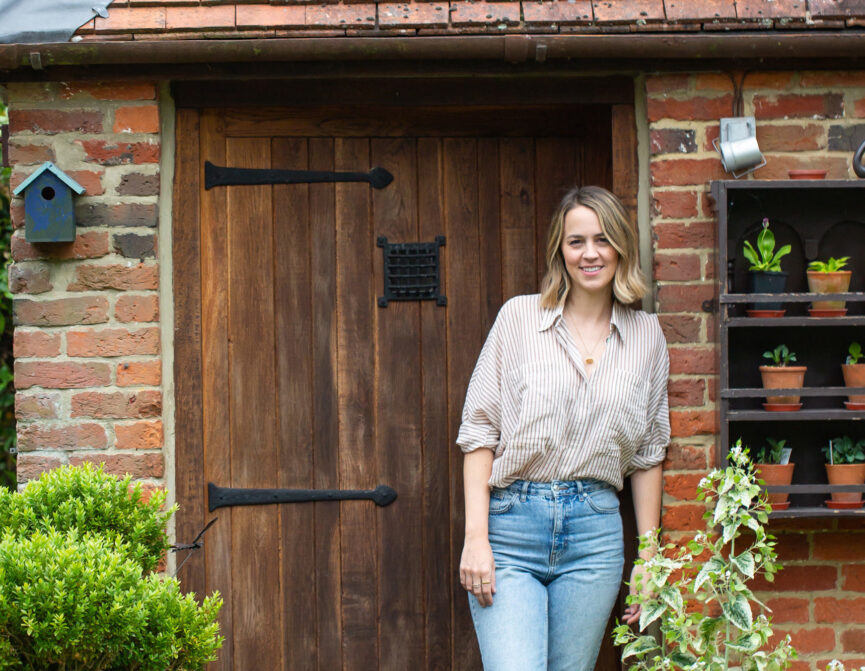The landscape designer on recreating the comfort of home in your garden. And why wellness and gardening go hand-in-hand.
As indoor living has moved outdoors this summer, we want our gardens to look their best. But beyond the curb appeal, getting your hands dirty can boost wellness, too. Yes, there are ways to design well-being into your outdoor space, but there’s something about feeling the soil slip through your fingers that raises the spirits. And landscape designer, Pollyanna Wilkinson, agrees – in her pursuit of happiness, she traded her desk job in the city for a namesake landscape design practice in Surrey.
Since then, Pollyanna Wilkinson Garden Design has been transforming blank-canvas spaces across London and the southwest into inviting retreats, whether it’s for cocktail parties gathered around an alfresco fireplace or for keeping young ones entertained on discreet monkey bars. Take a look at her Richmond Entertaining Garden – a practice in spatial clarity and design.
In between consultations and site visits, Pollyanna spoke to us about her career change, the benefits of gardening and how to make your garden work for you. And what’s keeping her busy for the rest of the year.

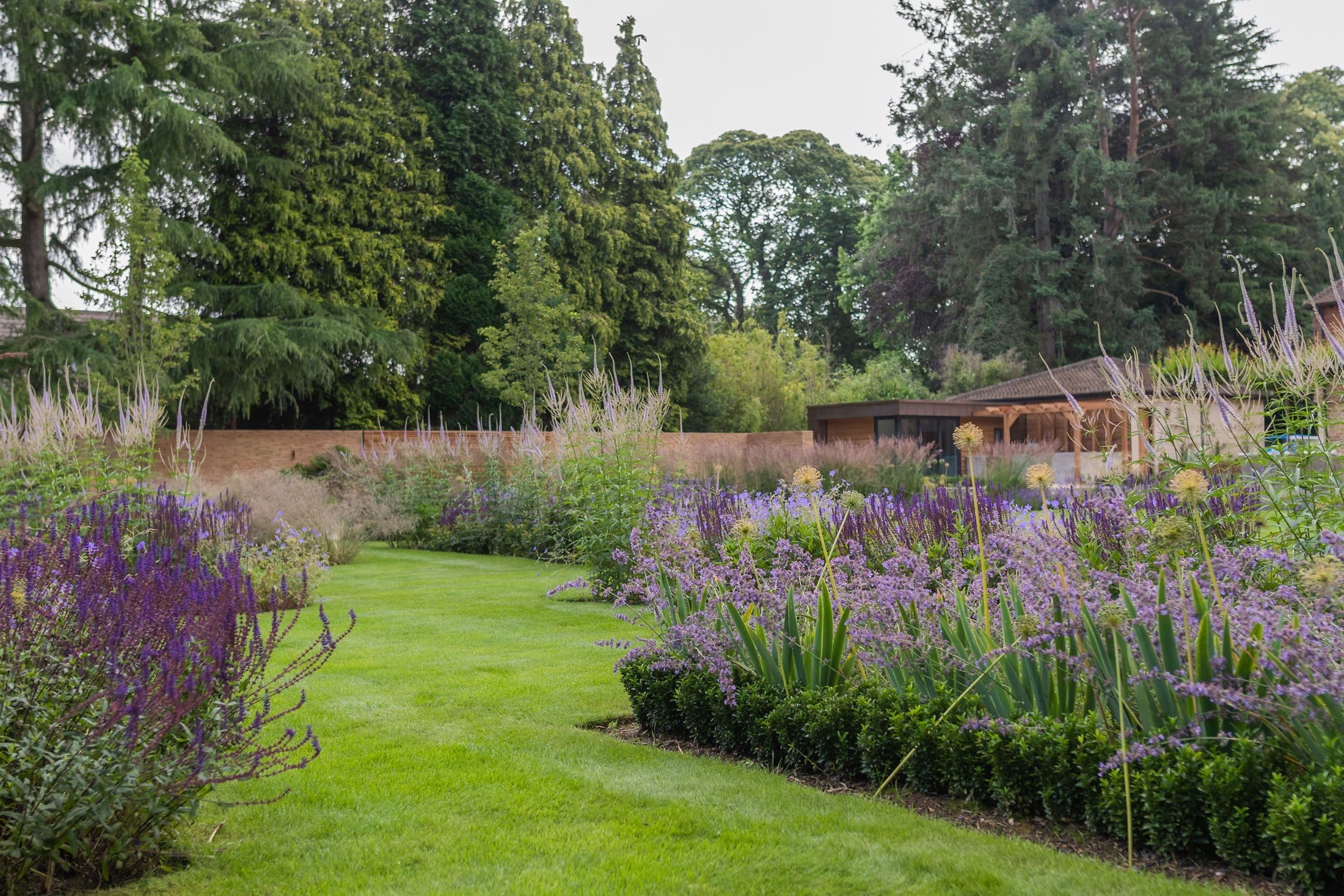
When did you first fall in love with gardening and what made you switch careers?
I’ve always been very passionate about design and knew I wanted to work in a creative industry. It wasn’t until I moved to London, where I rented a flat and grew tomatoes on my tiny balcony, that I caught the gardening bug. I soon realised that pursuing a career in landscape design was the perfect marriage of design and horticulture.
How would you describe your style and how has it evolved since you first set up in 2017?
My style is very much client-led, but the common theme in my work is a balance of elegance and practicality. Some have described it as modern country, and for larger spaces that definitely fits. In urban settings, I tend to go a little more formal. Above all, I like my gardens to be classic, floriferous and somewhere that you want to spend time.
You’re a qualified counsellor too. Can you tell us about the impact that a well-designed garden can have on your mental health?
Yes! For me, the benefits of gardening on mental health are more focused on the plants and less on the overall design. Yes, a design is pleasing to the eye, but it’s the act of bearing witness to the seasons through the planting, getting your hands in the earth, mindfully tending to the plants, and being amongst nature that’s going to be the most helpful to mental health.
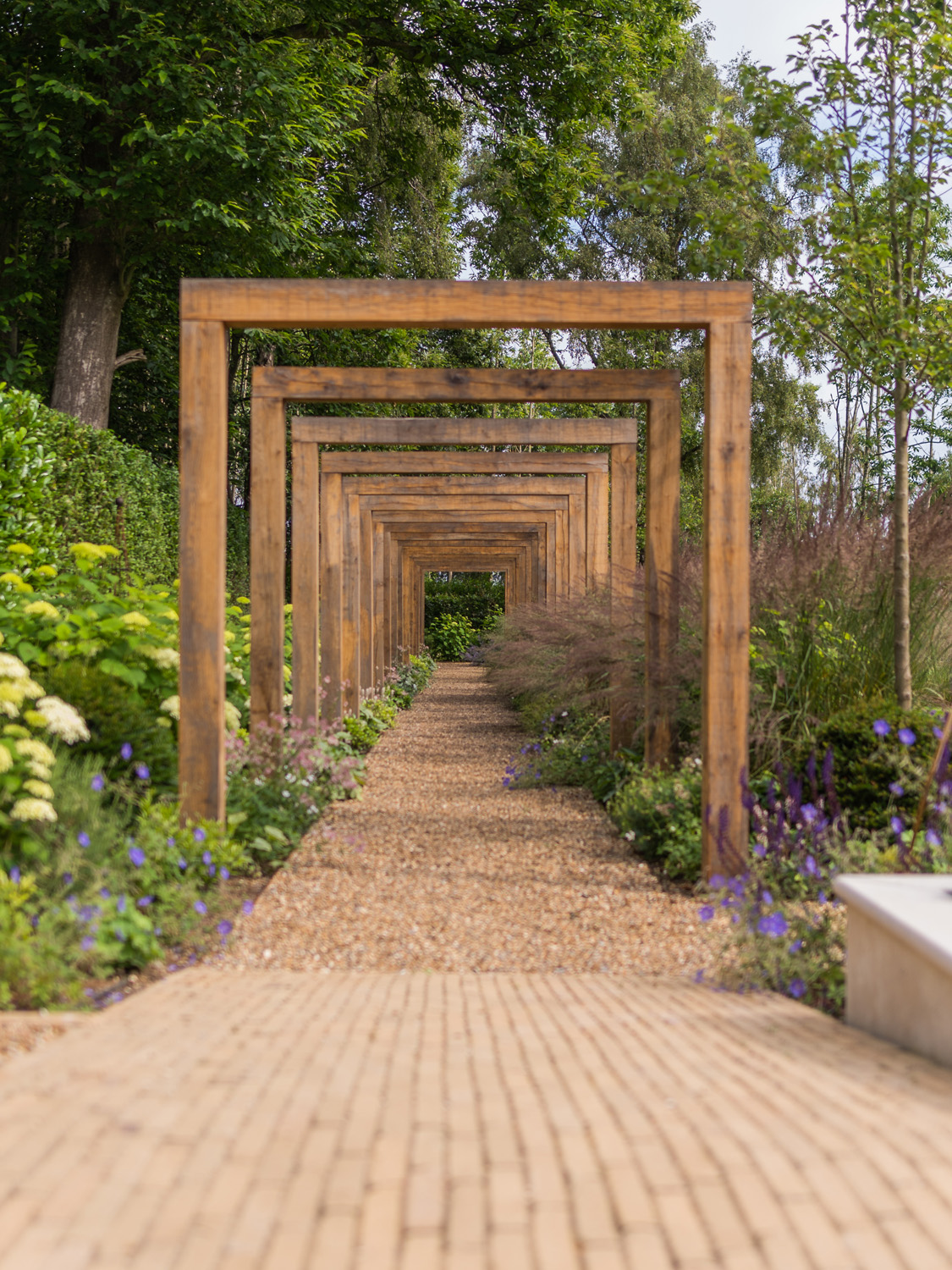
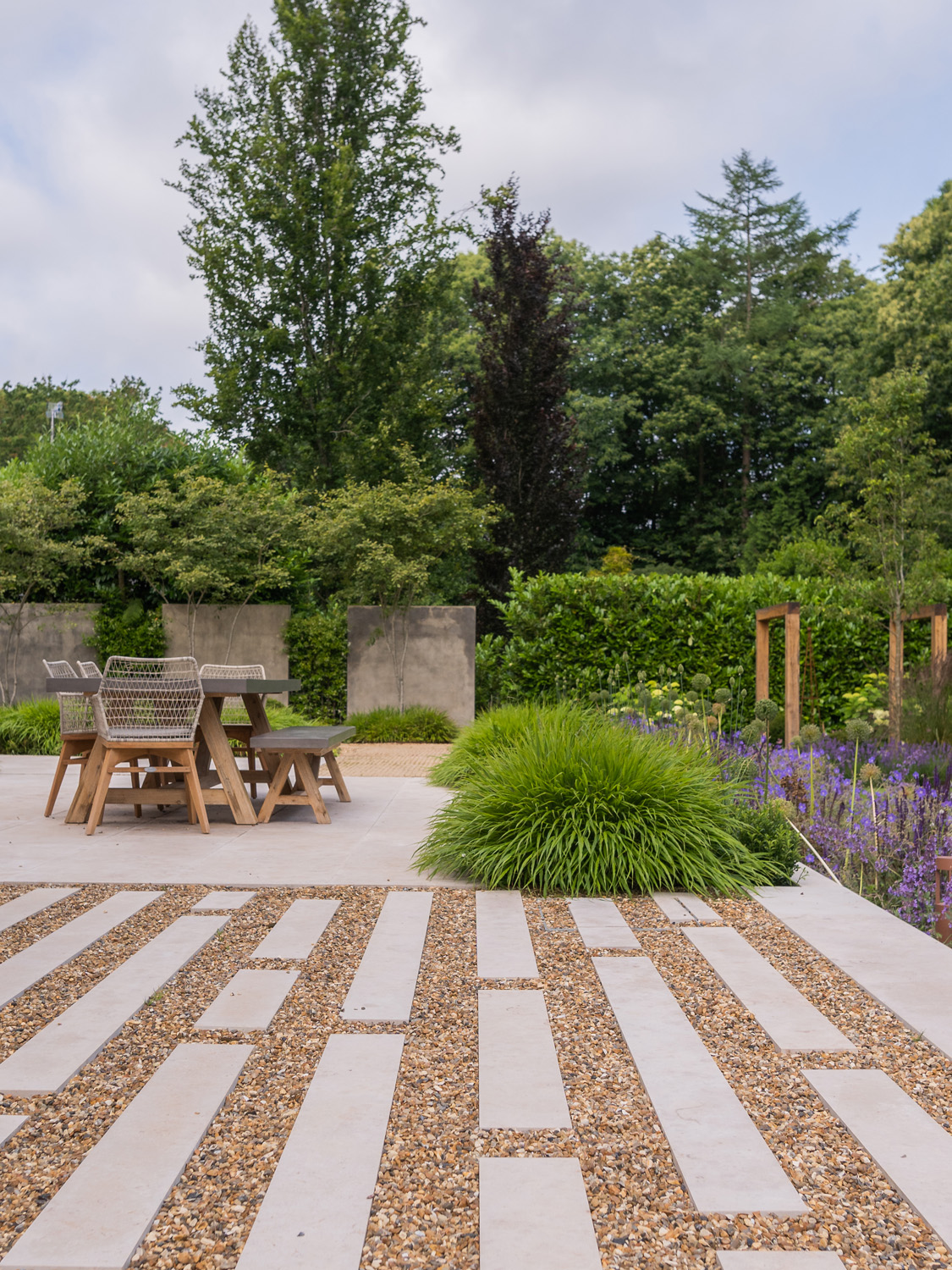

What are your top three tips for transforming a small outdoor space into a thriving and mindful retreat?
Bring in the plants! It’s easy to want to hard landscape a small space to feel you have maximised it, but it’s actually the greenery that will make it more inviting, so make sure you leave enough room for planting.
Adding a water feature, no matter how small, can be a wonderful addition. The sound of bubbling water is great for grounding you in a space – just think of meditation apps, which often feature water sounds. It’s also a lovely nature-friendly element.
We intrinsically gravitate to places of enclosure, so adding a secluded seating area surrounded by aromatic, scented planting is a sure-fire way to make sure you use the space well.
How can we incorporate a space for socialising in smaller outdoor plots?
More and more I’m being asked to turn smaller urban spaces into outdoor living rooms. The trick is to designate spaces for specific purposes. Choose where you will eat, where you will have a morning coffee and give the rest over to planting. Even in small spaces, you can have more than one ‘destination’ and it will make the space more interesting.
Having redesigned your garden with your children in mind, do you have any suggestions on how families can achieve an outdoor space that works for everyone?
The solution is usually careful positioning. I want the garden to be somewhere adults can relax and enjoy without feeling like they are sitting in a playground, but it also needs to work for the kids. This usually means we designate certain areas as ‘play space’, and then get creative with planting and focal points. The garden needs to grow with the household so we always future plan what’s going to happen as the family grows up.
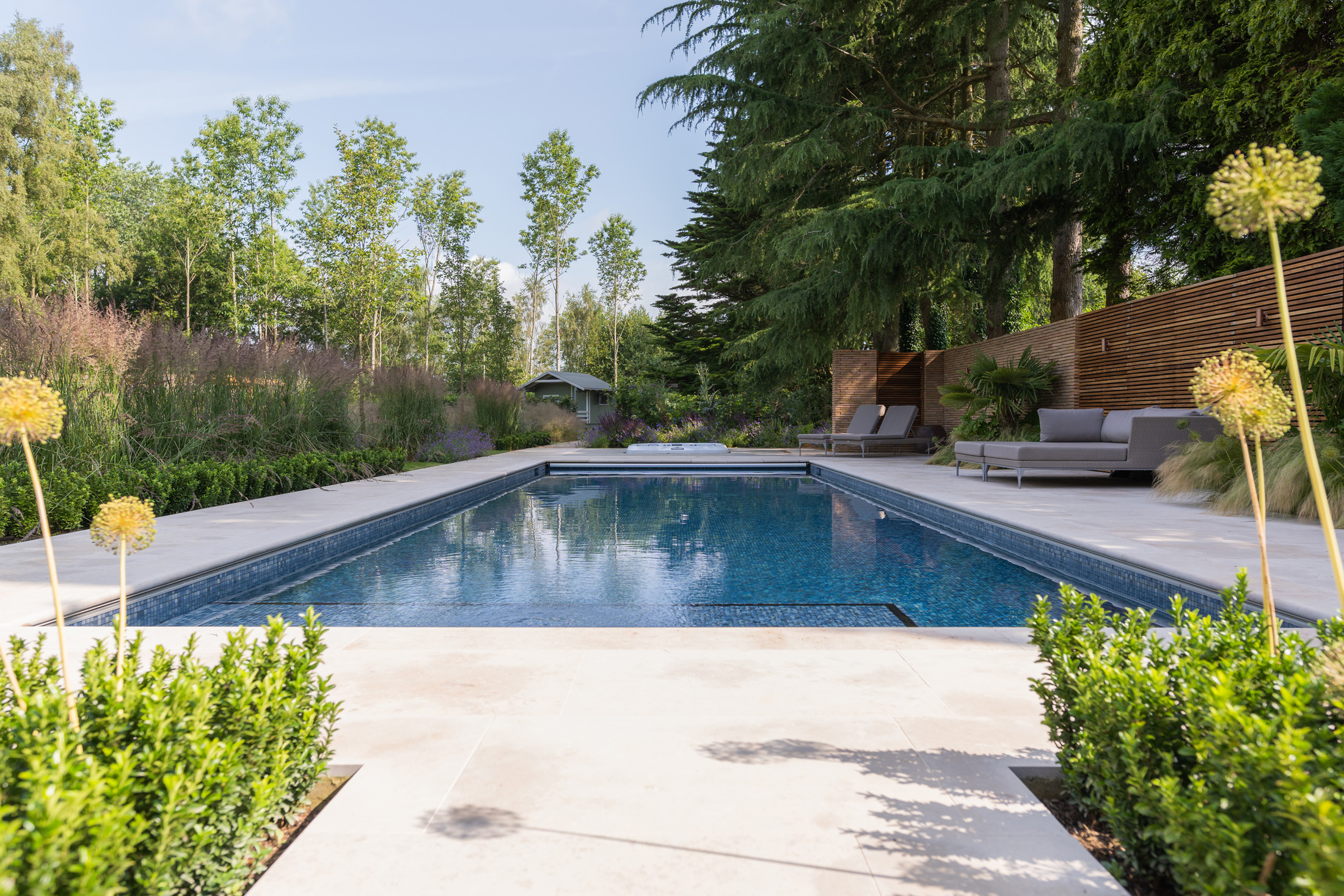
What should be on our gardening to-do list right now?
Deadheading. Roses, Sweet peas, and lots of flowering annuals and perennials need regular deadheading (removing the spent flowers) to make sure you get a second flush later in the season. Wisteria needs a prune now, too.
What has been your favourite project to date?
I have so many favourites and my clients are always such fun to work with, so my usual answer is whatever I am currently working on! At the moment, we’re building a garden that we are installing a full-sized skate ramp in. It’s fun to do something new.
What are you currently working on?
I’m currently developing designs for a number of large-scale residential projects in Kent, Surrey and Oxfordshire, with various others in the process of being built. Later this year, I am starting a fabulous barn conversion which is going to be a great fun – we are using a lot of reclaimed materials and the planting is going to be abundant.


